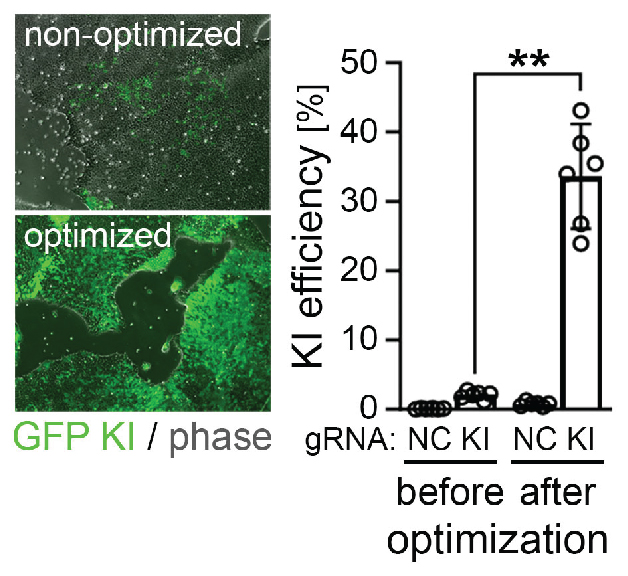
Gene Editing of iPSCs

Gene editing using CRISPR nucleases will likely become a standard of virtually any iPSC-based advanced therapy. On the one hand, gene targeting is inevitable for any application in immuno-oncology which requires cancer recognition through introduction of chimeric antigen receptors (CAR). However, in cell replacement therapy, gene editing may be used to enhance product efficacy and safety. For example, HLA genes may be manipulated to enhance immune compatibility between the iPSC-derived cells and recipient patients, and molecular kill switches may have utility in erasing transplanted cells if desired or needed.

To enable corresponding workflows in a clean room setting, Catalent scientists have systematically optimized CRISPR-based editing in iPSCs. Based on a GFP targeting vector, the above data show that specific knock-in efficiencies exceeded 30% on average, without need for cell selection or enrichment using complex and hard-to-qualify equipment. Similar results were obtained for introducing hypo-immune edits and kill switches into our in-house GMP lines. We offer this patent-pending methodology in conjunction with our iPSC banking service.
